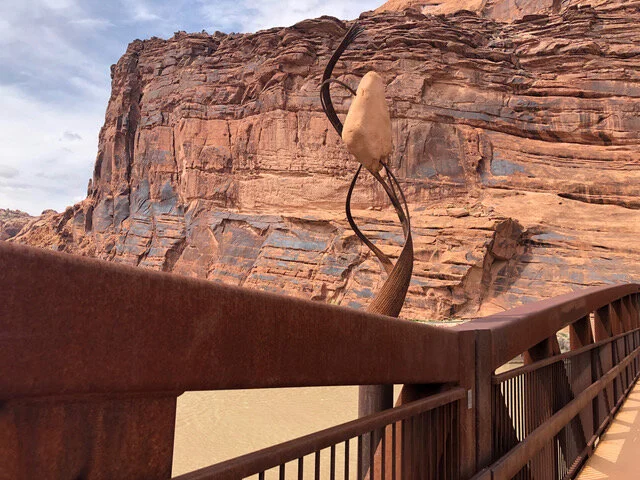TWO PAPER BAGS
(An Edited Excerpt from Beyond Denial)
As this watershed year of 2001 nears its end, what next? Despite these harsh times, the turning of one year to the next can remind us of new beginnings, and of the opportunities they bring for shaping a better future. As our spiritual traditions remind us in their varying ways, there is a “starting now” side of life that is ever at hand, if and as we proactively seek and find it.
One way to start again now is to retrain our minds to look at previously known things in fresh new ways. The Unitarian minister Robert Fulghum tells a story about his then seven-year-old daughter, Molly. As he left for work one day, she handed him two brown paper bags. One held his lunch. When he asked Molly what the second held, she said, “Just some stuff. You can take it with you.”
At noon, Fulghum opened the first bag and started eating.
He then curiously opened the second, mystery bag. When he emptied it out, here’s what he saw: three small stones, one pencil stub, two hair ribbons, a plastic dinosaur, one tiny seashell, two partially nibbled animal crackers, a marble, some used lipstick, a small tattered doll, two chocolate kisses, and thirteen pennies.
A few hours later, after a busy afternoon, Fulghum was running late. As he tried to restore some order to his desk before leaving, he absentmindedly dumped both bags into the trash. When he got home, up came Molly, saying excitedly, “Daddy, Daddy, did you like my bag?” “Why, yes, Molly, I loved it,” he answered. Right away she said, “Where is my bag?” He mumbled something about having left it at the office, and then said, “Why do you ask?”
The little girl said, “Those are my things in the sack, Daddy, the ones I really like. I wanted you to have fun with them during the day while I was at school, but I’d like to play with them now. You didn’t lose that bag did you, Daddy?”
It’s all in how we see things, isn’t it? To a still-young Robert Fulghum, busy building a career, the ribbons and stones and the rest didn’t seem like much. To his auto-pilot adult mind, those items were old and worn-down. They came in a crumpled bag of a kind our culture has us often use once and then throw out. Because he saw only the used and childish element in them, he saw them as throwaways.
But to Molly they were priceless because she saw them differently. Her child’s heart and wide-flung imagination could still see their specialness, despite their ordinariness. And letting her dad play with them at work, even for a day, was a child-gift of love. But Robert Fulghum couldn’t see it—or at least, not at first. The Hebrew prophet Isaiah once wrote about how “a little child shall lead them” (Isaiah 11:6). This was a moment for the Reverend Fulghum to learn a slice of that wisdom at work in real life.
As we step toward an uncertain future, filled with the decidedly “mixed bag” that 2001 has left us, one way we can face into these coming days is to look forward with a child’s eye of possibility. We can look with the same beginner’s mind that can turn some simple pebbles into priceless gems; a broken-off pencil into a Shakespearean quill; a plastic dinosaur into a time-travel machine; an old, worn-out doll into a gracious queen; a small, cracked shell into a trip to the shore; two chocolate kisses into kisses sweeter than wine; thirteen pennies into the gold of Fort Knox; and two partially nibbled animal crackers into the Bread of Life itself.
The creative innocence in children that can see such things is still available to empower each of us, of whatever age, to share in the work of imagining and building a humane future for those same children—and, yes, for us grown-ups too—one that is structured around real love, around kindness and caring, and around creative possibilities, and the willingness and daring to bring them into form and aliveness.
We need that kind of creative imagining greatly. It’s the one thing, if not the main thing, of lasting hope and value.
